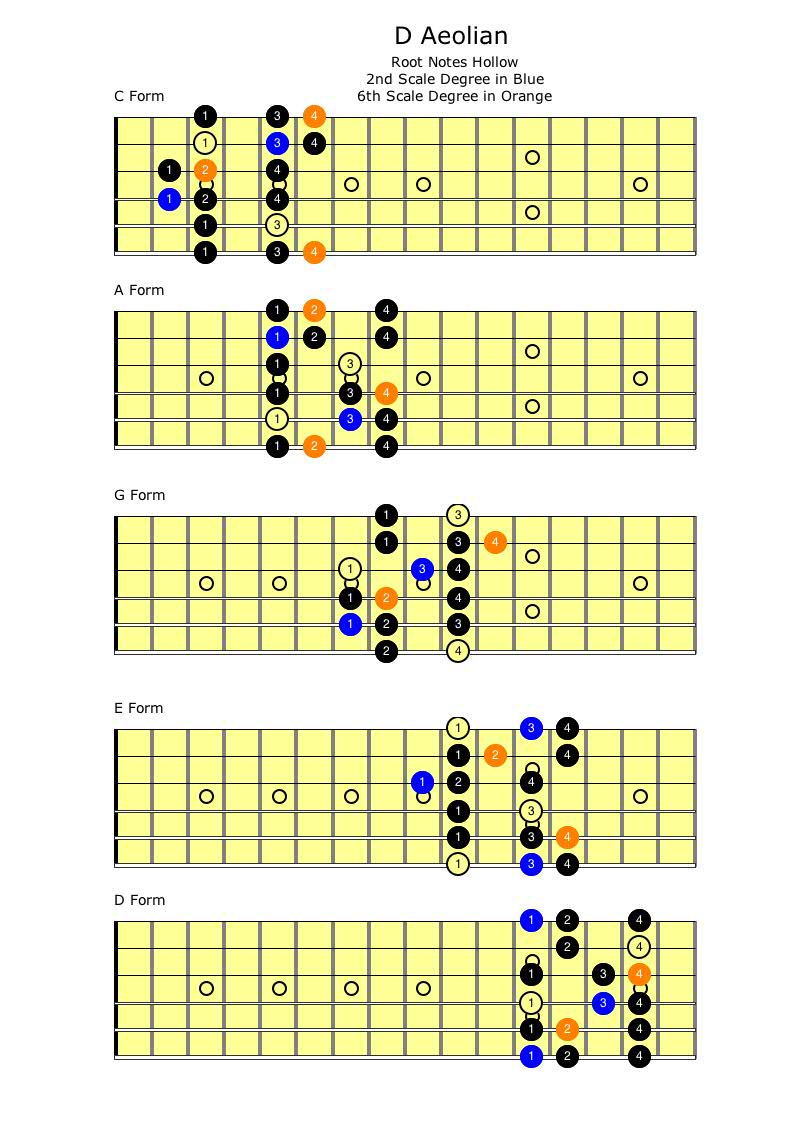
* The above diagram is the Minor Pentatonic scale with the 2nd and b6th degrees added to create the Aeolian scale. The 2nd degree is in green, and flatted 6th degree is in red.
Important characteristics:
- Aeolian is commonly known as both the Relative Minor and Natural Minor scales.
- is the 6th mode of the Major Scale and is used over the vi(6) chord when soloing.
- It is the Major scale with the flatted 3rd, 6th, and 7th degrees.
For Example:
C Eb F G Bb C – Minor Pentatonic.
1 b3 4 5 b7 1
C D Eb F G Ab Bb C – Aeolian.
1 2 b3 4 5 b6 b7 1
C D E F G A B C – Major Scale.
1 2 3 4 5 6 7 1
*It is important that you first master the Minor Pentatonic Scale well before learning Aeolian. This is because the Minor Pentatonic Scale is the basic skeleton of the 3 Minor Modes: Aeolian(Natural Minor), Dorian and Phrygian. I teach them all as just minor pentatonic scales with the missing 2nd and 6th degrees added.
Now Visit: Aeolian Scale Practice

When practicing any scale, if i say wanted to play this scale and all five patterns in the key of A. Am I correct in assuming i would start using the first form and the first fret i would play would be the 6th string, 5th fret, which is an A? and then i would just play the other patterns down the neck?
Yes, but you would have to start with the E form or G form patterns because they are the only two that have the root on the 6th string. Take a closer look at them and you’ll see what I mean. Remember the root notes for each form are the circled #’s. If you place those on an A you’ll be in the key of A minor. If you place them on a C you’ll be in C minor. Each of the 5 forms will have them in a different spot. Let me know if you have more questions! These concepts take time to fully grasp.
It also may be helpful to know that the forms always appear in the same order no matter what key you’re in. So C form is always before A Form and A always comes before G form and so on. After D form comes C form again.
Ok so if im understanding correctly, if I wanted to play this scale in the key of A and i wanted to use the A on the 6th string then i could start with the E form and then proceed down the neck with D, C, A, G. and that E form would start on the 5th fret
Yep, you got it! A on the 6th string at the 5th starting with the 1st finger just to be clear.
awesome, im starting to grasp it